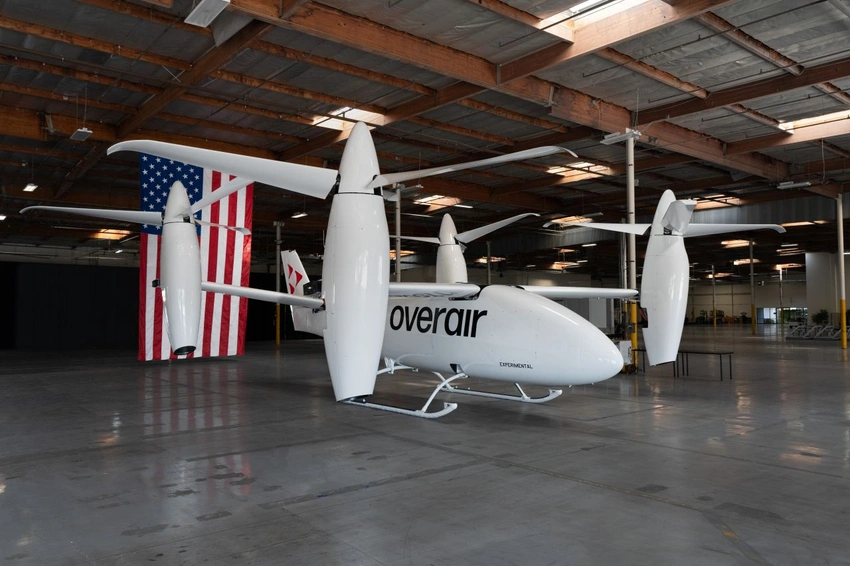
Photo: Tom-Maguire
San Francisco’s quest to cut traffic deaths to zero
15 February 2018
by Nick Michell
Nick Michell spoke with Tom Maguire, Director, Sustainable Streets, San Francisco Municipal Transportation Agency (SFMTA), about the city’s efforts to reduce traffic fatalities and the challenges of redesigning its streets
If put in place, how will President Donald Trump’s US$1 trillion infrastructure plan affect the SFMTA?
We certainly believe it’s important that the federal government play a bigger role in maintaining both national and urban infrastructure. At the moment on a city level we don’t really know much about what form the infrastructure plan is going to take or whether it will even pass, so we are focused on self-help in San Francisco. Our voters passed a half a billion-dollar bond measure in 2014 and we’re continuing to deliver those projects.
California’s cap-and-trade programme, which aims to help lower the state’s greenhouse gas emissions, has generated millions of dollars to buy new trains and other key improvements to the transit system. This year the State of California passed the Senate Bill 1, the Road Repair and Accountability Act of 2017, a legislative package that will invest US$54 billion over the next decade to fix roads, freeways and bridges. It has set a new tax framework that is providing a lot of resources for us to maintain and improve our transport infrastructure.
We’re hopeful that something will happen at the federal level, and we join all the other cities and states in calling on the federal government to fund infrastructure at the level that needs it. But we are not waiting around for action; we will carry on making our own investments and improvements.
San Francisco’s Vision Zero has set the goal of achieving zero traffic deaths by 2024. What initiatives have been implemented this year and have traffic fatalities decreased?
We like to approach Vision Zero systematically, and not view it as just engineering projects, but combining the city’s abilities to re-engineer the streets, improve safety design, target enforcement towards changing driving behaviours that actually kill people on the roads, and educate the public about what they can do behind the wheel, and on the streets, to make the city safer. One of the key themes that runs throughout this is the importance of reducing excessive speed on our streets, which causes two-thirds of the fatal crashes in San Francisco.
In the last fiscal year we reached our target of writing 50 percent of our traffic citations for deadly behaviours and have been delivering significant changes to the streetscape. Just this spring, with a rapid turnaround, we implemented three new parking protected bikeways though our major segment corridors, where there were several high profile fatalities in 2016.
How is San Francisco trying to get more people onto bicycles? Is safety a factor preventing more people from cycling?
There is definitely a connection between safer streets and higher rates of cycling, and it’s long been a priority for San Francisco to encourage a shift of travel towards all sustainable modes, of which transit is the biggest, but cycling is very important as well. There is a focus on providing better bicycle infrastructure. At the beginning of 2015 we had no protected bike lanes and now we have almost 13 miles of them. We are specifically targeting the streets that form a network and get cyclists around town, but also where safety concerns may be currently dissuading people from cycling.
We’ve launched a 4,500 bike-share system, which started in summer 2017 and will be rolled out over the next year and a half, pairing the safety of better infrastructure with the convenience of public shared bicycles, which has been shown to increase cycling all over the world.

Have you encountered much opposition to taking road space away from private cars and giving it to bicycles, buses and pedestrians?
It’s always a challenge to make changes to the way the streets are designed and I don’t want to minimise that. One thing we know in San Francisco is that the voters are the policy makers, and they want us to achieve the city’s Vision Zero. So, while I wouldn’t play down the challenges of building the consensus that we need to change our streets, like reducing traffic, creating transit priority space or safe cycling space, we think it’s a matter of us getting the project level details right, and not about us being on the wrong course.
In a number of cities businesses argue that people coming into the city to shop using private cars spend disproportionately more than those using public transport or walking. Is it similar in San Francisco or do businesses see more pedestrianised areas and increased footfall as beneficial?
We certainly feel that we have consensus with our city’s business leaders that transit priority and a walkable city is what gives San Francisco a competitive advantage over online or suburban shopping.
It is very important to attend to the parking and loading needs of small businesses. We have been doing creative things for years with off-street parking rates that has allowed us to continue to provide access for those that need it, while prioritising as much of a public right of way for transit as possible.
It is also vital that we pay attention to the way we manage our curbs. We are asking our board to approve a citywide rollout of demand responsive parking rates and if that’s successful it will create a scenario where there will virtually always be one space available on each block, through dynamic pricing. Of course the hope is the pricing will encourage as many people as possible to take transit or park off street when they come to visit the busiest parts of the city.
Is the retail sector engaged in the planning of transit changes in the city?
Very much so, we work both with our chamber of commerce, which takes a citywide commercial view, but also with neighbourhood merchants and local business groups whenever we talk about ways in which we want to change/use the streets for the transit system.
In 2016 SFMTA delivered over 330,000 additional hours of Muni service. How many more hours were added in 2017?
We have increased the service on our busiest and most congested routes, with buses that run on very short headways and are standing room only, at both peak and off peak times. The Muni Forward programme aims to deliver infrastructure improvements like red lanes, signal priority, and we introduced all-door boarding in 2012. We are adding more 60- foot long articulated buses on the routes that have the most passenger demand.

How is the city ensuring that the poor, seniors and people with disabilities are fully able to access the transport system?
Our Muni Service Equity Strategy intentionally looks to use transit as a key part of the city’s social service offering, reaching our communities of concern. We have chosen to place additional service into neighbourhoods where we know there is low car ownership and mobility. There’s a real need to provide better access both into and out of the most disadvantaged neighbourhoods to jobs, schools and services.
There are several programmes that make the Muni system either half price or free for senior citizens, persons with disabilities, low-income persons and students. We think about 10 percent of our riders are travelling either free of charge or with a 50 percent discount.
Is progress being made towards the introduction of the Bus Rapid Transit (BRT) system? What obstacles have prevented a BRT system being implemented in the past?
We are building something that I think some cities would call true BRT, a centre-running dedicated right of way with low-floor buses. It is under construction now and we hope it will be open by 2020.
It has been a challenging project both to plan and deliver and we’ve had to make some major changes to what is a really key cross-town traffic route in our city. San Francisco is fortunate to have a grid street system, which means we are able to manage traffic, not just on a street by street basis, but on a corridor wide basis. We’ve had to make some changes to parallel streets to allow them to safely carry more traffic because the introduction of the BRT lane will reduce traffic capacity.
How much investment and emphasis is being placed on the development of and preparation for automated vehicles (AVs)?
We’ve had one of the cleanest bus fleets in the US for decades and that is because a large proportion of our buses run on overhead wires and we get our municipal electricity from hydro electric, so we are running a true zero emission system from the source of the power to the service on the road for a wide part of our Muni network. We also brought in diesel electric hybrid buses earlier this decade and they are displacing almost all of our pure diesel buses.
As far as electric vehicles, we have been supporting the rollout of EVs in the city and currently have about 21 off-street garages, almost all of which have electric charging infrastructure. We’ll need to expand this and want to use our existing parking assets to support electrification of a private fleet to match the investment we have made in the public fleet.
In terms of automated vehicles, the city doesn’t have a lot of regulatory authority in this area, but we have been working closely with our state department, which is writing AV rules for California. They are taking into account the urban perspective when they write these rules and it is really important to us that AVs are able to interact with the complex environments that we have in cities. That means dealing with transit, on street rail and heavy pedestrian volumes, so we need rules in California that challenge the industry to operate safely in cities.











